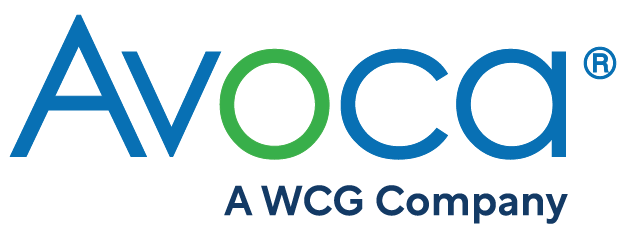Inspection Readiness Storyboarding – Provides a Strong Framework for Alignment

Inspection Readiness Storyboards, when created properly, are powerful tools for summarizing an organization’s process during a clinical trial, by condensing the study’s story into easily shared high level messages or snapshots that identify key information and related decisions made during the trial.
Storyboards can provide a strong framework for clear messaging that is easily communicated to inspectors by the sponsor’s facilitating team. However, developing dynamic and comprehensive storyboards seems to present some challenges for even the most experienced industry leaders. The challenges around creating effective storyboards are often due to study complexities and then having the ability to succinctly explain those complexities and related actions in a way that everyone involved can agree upon, understand and support.
Most of us acknowledge that the primary objective for creating Inspection Readiness Storyboards is to unify stakeholders as to what transpired during a clinical trial and to best communicate sensitive information and complex aspects of a trial to regulatory inspectors. However, creating and maintaining Inspection Readiness Storyboards are not in themselves a regulatory requirement, so then why and how should we use them?
There are many advantages in creating and utilizing storyboards:
- They provide a framework for creating clear messaging that can be consistently communicated by the facilitating inspection team.
- They are especially helpful in situations where an organization has experienced transition, significant change, for mitigation of existing gaps, and other unique self-identified compliance scenarios.
- They identify remediation enacted to ensure patient safety and data integrity.
- They help remove ambiguity, potential contradiction, and decision-making under pressure, when addressing inspection questions about difficult and confusing aspects of the clinical trial.
- They prevent the likelihood of problems arising during an inspection due to different facilitators or SMEs, unknowingly providing contradictory explanations of what occurred, and the actions taken to address related issues or gaps (It is not uncommon for facilitators to unintentionally provide contradictory information during an inspection when describing complex processes or situations where errors have occurred even when remediated).
If utilizing storyboards is considered an industry best practice, then why so much confusion around creating them?
One possibility is that there are several approaches and types of storyboards that an organization should consider when developing a set of storyboards, depending on the need. There are storyboards specific to the project/trial, non-compliance, functional or process, strategy and decision rationale, and so on which can further complicate development and proper utilization of storyboards.
Another possibility that may be adding to the complexity of creating storyboards is that the process and/or tools to be utilized are not typically described in a standard operating procedure (SOP), for good reason, as they are not addressed in industry guidances or a regulatory requirement and should for the most part be considered an internal tool or guide.
From a regulatory perspective, the expectation is that we are always inspection ready, therefore a regulation addressing various tools in preparation or support of an inspection is unnecessary as the implication is that we will be inspection ready, at all times.
Should storyboards be shared with Inspectors?
Historically the sharing of storyboards with regulatory inspectors has been heavily frowned upon, and for the most part that remains true today. However, it may be advantageous for facilitators to share certain elements or segments of a storyboard in order to respond quickly to an inspector’s request or question by providing a short summary or visual that would otherwise take a long time to prepare or explain without a visual reference. Should facilitators choose to share material from their storyboards a rigorous and thorough review of the material in question would need to be completed to ensure extraneous or unintended information is not also shared. In addition, facilitators need to refrain from referring to “storyboards” during the inspection (as that could raise more questions); reference should be to official documents only (from which storyboards are prepared). Any extracted information from storyboards to be shared with inspectors needs to be carefully checked against official documents.
What Topics Should be Included in a Storyboard?
Storyboards are well suited for situations that are challenging to explain and can lead to confusion or unintentional contradictions during an inspection. They can address non-compliance issues, strategy rationale, decision making processes, including anticipated difficult questions and they may include such things as timelines and/or process flow charts. They also serve as an institutional memory, which is especially helpful when an organization has had turnover or gone through significant organizational changes.
Successful Storyboards contain the following key components:
- Problem Statement: A direct statement which identifies the gap or issue and what actions were taken to mitigate the problem.
- Position Statement: A concise statement of what you want the Inspector to know.
- Background Information: A brief outline of what happened and when, and the timing of the steps taken to mitigate the issue.
- Documentation: Knowing where all documentation related to the issue is located and ensuring it is accessible.
- Conclusion and Rationale: A brief summary of why it was not an issue, or if it was an issue how it was resolved and mitigated moving forward. Reference documentation, data or measures which support this conclusion.
- Inspection Strategy: An outline of how the team plans to address issues and gaps during the inspection which helps to ensure alignment of team members supporting the inspection.
When should Storyboards be developed?
It is best practice to create Storyboards early on, being proactive and initiating development when an issue or situation arises can save an enormous amount of time and effort down the road when trying to piece together a summary months later.
Setting up a storyboard as a working document, and keeping information compiled in real time, avoids frustration and additional effort during the inspection preparation stage when pressure is increased.
As part of inspection preparation (i.e., activities performed in the run up to an inspection), the Inspection Lead should compile all available storyboards pertaining to the inspection (i.e., product, program, site), check with authors that the ‘stories’ are up to date, consistent, accurate, and that those who will be participating in the inspection are well versed in ‘telling the stories’.
How should Storyboards be utilized during a regulatory inspection?
It’s extremely important to know how to use storyboards during a regulatory inspection and equally important is knowing how not to use them.
Well-designed storyboards are highly effective at helping prepare and align SMEs and Facilitators prior to meeting with Regulatory Inspectors. They can also be utilized as a reference or directory for facilitators in identifying additional information as needed throughout the inspection.
During a regulatory inspection it is important to keep in mind the intent and appropriate use of storyboards:
- A storyboard should be used as a tool to support the facilitators in ensuring key information is concisely and correctly conveyed, and that there is alignment among those providing information to inspectors.
- A storyboard should include the location of relevant supporting documentation, which can assist facilitators in responding quickly to inspection requests.
- Storyboards should be short and concise, not long historical documents containing background or superfluous information. They are intended to provide the least amount of information needed to adequately address an inspection request.
- Storyboard information can be verbally shared with an inspector, but actual sharing of storyboards and/or referring to a storyboard should be avoided, as the storyboard is not intended for sharing, in its entirety, during an inspection.
- It is important that Storyboards do not duplicate or conflict with other study documents such as the Trial Master File (TMF), SOPs, Work Instructions, or other organizational documents subject to inspection review.
- Storyboards should not contain statements that may inadvertently prompt facilitators to share additional information that would otherwise not have been requested by an inspector, potentially leading to further questions and potential confusion or ambiguity.
In conclusion, Storyboards can provide the framework needed to convey key information in a clear and concise way with confidence and in alignment across all functions of the organization, making the regulatory inspection process much smoother for everyone involved.
Contact us to learn more about how WCG Avoca’s consulting services can help your company utilize storyboarding for a smoother regulatory inspection process
Authors:

Erin Jacques
Director, Client Delivery
WCG Avoca

Irene Michas, BA, MSc, PhD
Senior Consultant
WCG Avoca
